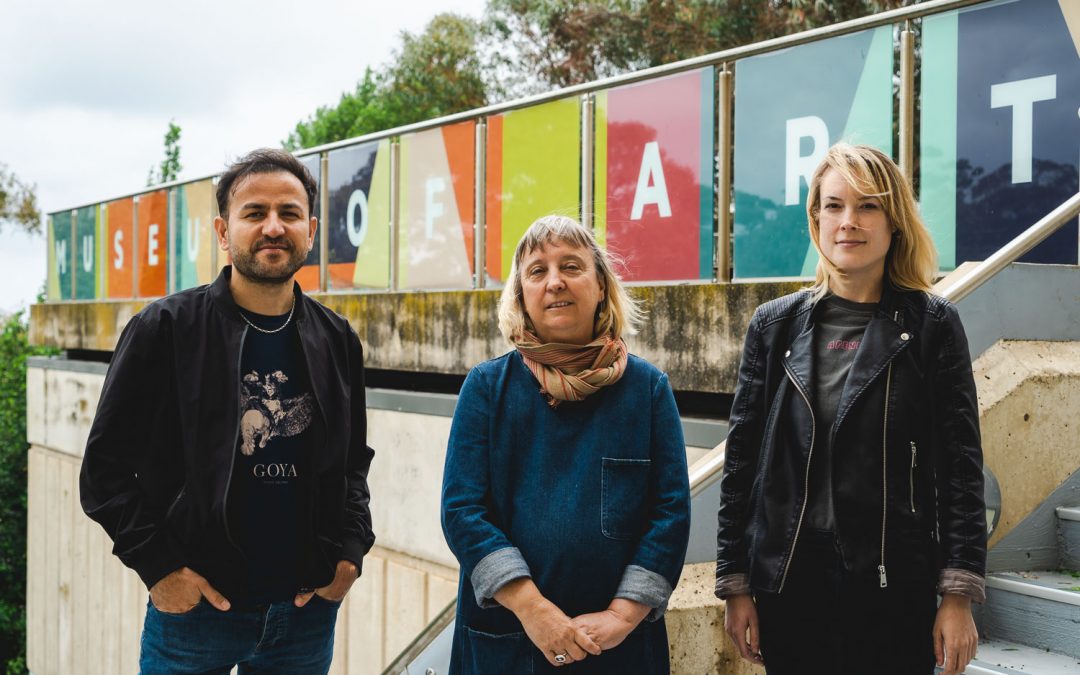Image: Elyas Alavi, Louise Haselton and Kate O’Boyle at Flinders University Museum of Art. Photograph Brianna Speight.
Announcing The Guildhouse Collections Project artists and partner institutions:
Seven talented South Australian artists have been selected to undertake The Guildhouse Collections Project in 2022, working with five major cultural institutions to produce new responsive works of art.
The appointed artists are Elyas Alavi, Kate O’Boyle, Chelsea Farquhar, Louise Haselton, Clem Newchurch, Kasia Tons, and Peter Turner.
The Guildhouse Collections Project is a highly sought-after residency program that provides behind-the-scenes access to collections held by the Flinders University Museum of Art, The Botanic Gardens and State Herbarium of South Australia at the Santos Museum of Economic Botany, Adelaide Symphony Orchestra with Adelaide Festival Centre and the South Australian Museum.
From early career to established practitioners, the selected artists represent a diverse range of creative practices including sculpture and performance, video, textiles, poetry, and Aboriginal carving and weaving.
Occurring throughout 2022, the project provides a rare opportunity for our important state collections to be re- imagined in a contemporary artistic context. Each artist works closely with the curatorial team of the host institution to access and research the collection, working toward an exhibition of new responsive work. Each residency is a paid position with a total investment of $70,000 in payments to creative practitioners including artists, essayists, photographers and designers across the program.
“We are delighted to work with our cultural partners to appoint such a diverse group of talented practitioners at various stages of their artistic careers. Each has demonstrated a clear intent to explore an important collection held in South Australia and respond with new work that extends their artistic practice and offers something anew to audiences.”
The Collections Project artists & partner institutions:
Flinders University Museum of Art:
Elyas Alavi
Kate O’Boyle
Louise Haselton
Adelaide Symphony Orchestra with Adelaide Festival Centre:
Chelsea Farquhar
The Botanic Gardens and State Herbarium of South Australia at the Santos Museum of Economic Botany:
Kasia Tons
South Australian Museum:
Clem Newchurch
Peter Turner
Flinders University Museum of Art:
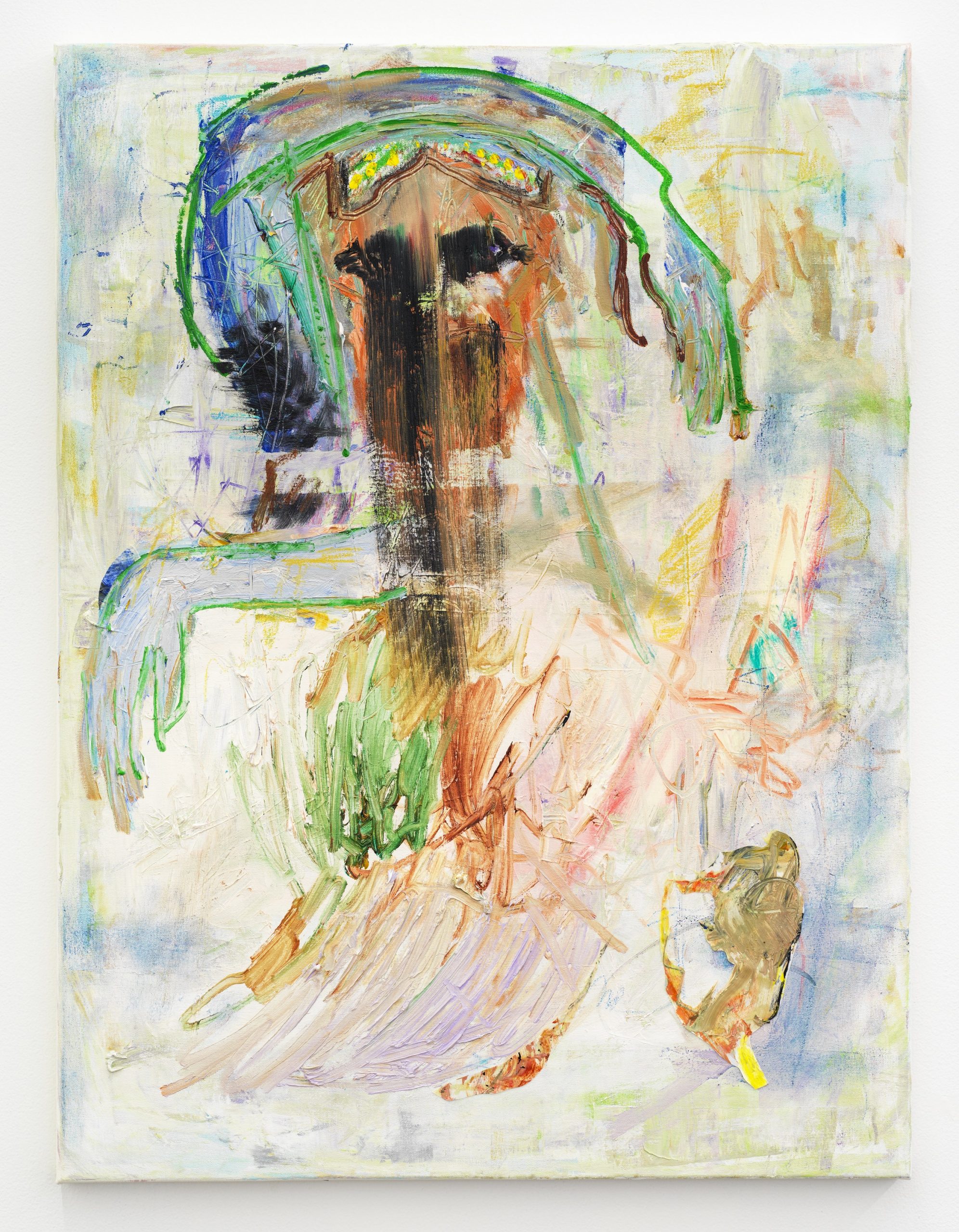
Image: Elyas Alavi, untitled, 2021, oil on canvas, 110×76cm. Photograph Grant Hancock.
Elyas Alavi
Elyas Alavi is a Tarntanya (Adelaide) based artist and poet whose practice across visual art and poetry addresses issues around displacement, trauma, exile, gender and sexual identity. Reflecting on his Hazara background, Alavi uses his particular experiences and contemplations as an epistemological model for the dislocation of peoples.
Alavi graduated from a Master of Visual Arts at the University of South Australia in 2016 and a Bachelor of Visual Arts (Honours) in 2013, and has exhibited at Mohsen Gallery (Tehran), Firstdraft (Sydney), Robert Kananaj (Toronto), IFA (Kabul), Chapter House Lane (Melbourne), UTS gallery (Sydney) as well as ACE Open, FELTspace, Nexus Arts, CACSA Project Space and Sauerbier House (all Adelaide). He is the recipient of a 2019 Anne & Gordon Samstag International Visual Arts Scholarship, and in 2020 completed a Master of Fine Arts at Chelsea College of Arts, University of London.
Alavi has published three poetry books in Afghanistan and Iran, receiving critical acclaim and a number of literature prizes: International Peace Poetry Prize winner, Tajikistan (2011), The Annual Reporters Poetry Prize, Tehran (2009), Young Poets Book of the Year, Iran (2008) and Afghan Young Poets Prize. He regularly runs art and poetry workshops in schools and community centres in Adelaide.
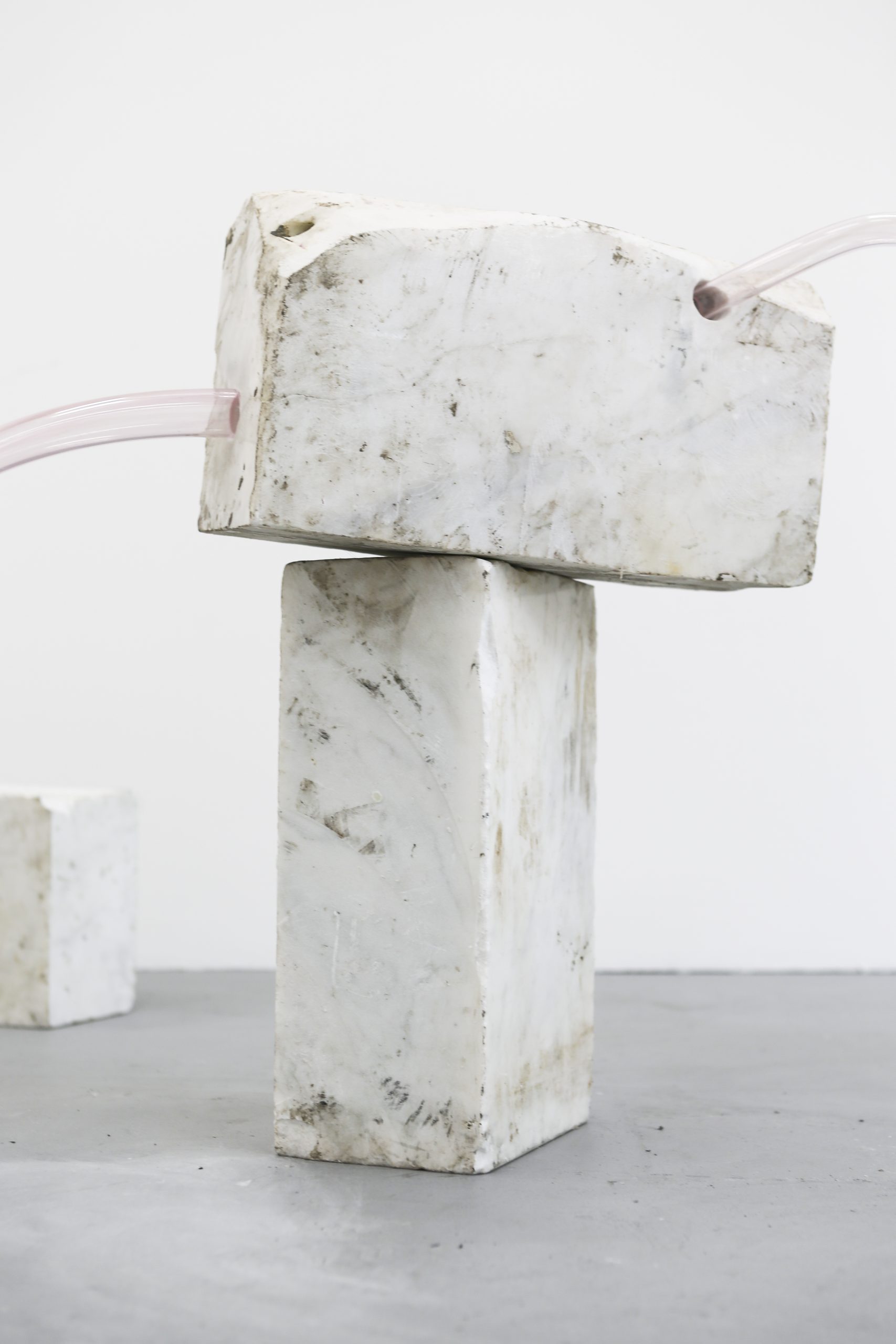
Image: Kate O’Boyle, Voids and Votives (detail). Photograph Lauren Dunn.
Kate O’Boyle
Kate O’Boyle is an emerging artist based between Tarntanya and Narrm, who works across installation, sculpture, performance, and digital media. Kate’s practice considers the role materiality plays in divinity and acts of worship.
Kate has exhibited at Murray Art Museum Albury (MAMA), Channels festival, Runway Magazine, Seventh Gallery, Critical Path, Site Eight, FELTspace, KINGS ARI, Holy Rollers, and the National Art School. She has been awarded several academic scholarships, the Blau Trust award, the James Martin Award for Outstanding Graduate, and the Guildhouse/FELTspace Graduate Award.
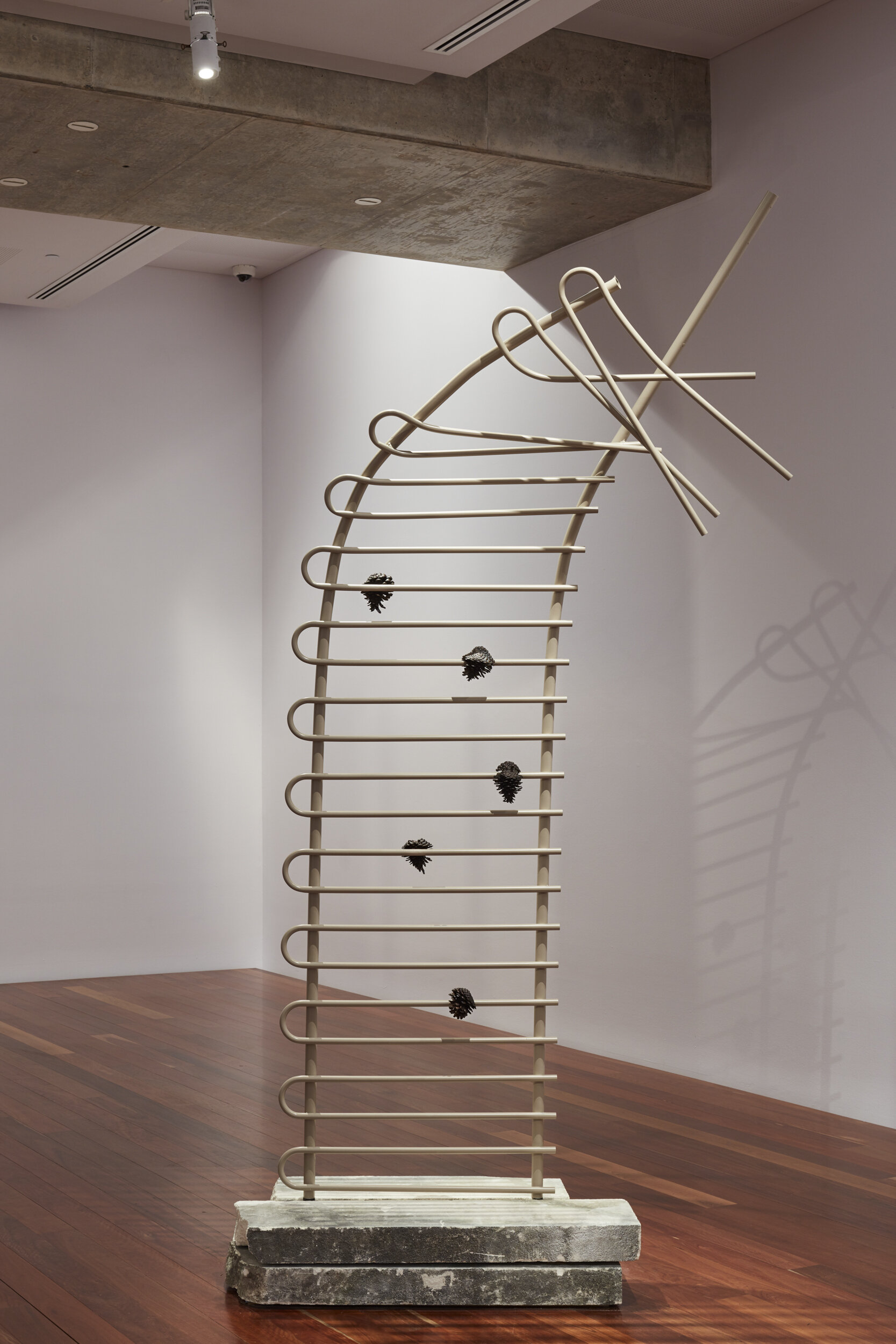
Image: Louise Haselton, Like Cures Like. Photograph Sia Duff.
Louise Haselton
Louise Haselton is a visual artist whose extensive practice employs a range of presentations. Her practice explores the inherent qualities of everyday materials, seeking connections and relationships between seemingly disparate materials and objects gathered from the world around us.
Haselton was awarded a Bachelor of Visual Art in 1990 from the University of South Australia and in 2002, a Masters of Fine Art (sculpture) from RMIT University, Melbourne. She has undertaken a number of artist residencies including at Sanskriti Kendra, Delhi, India, Phasmid Studios Berlin, Germany, and Blackstone Art Centre, Papalankutja, Western Australia. She has held solo exhibitions at The Experimental Art Foundation, The Samstag Museum of Art, The Contemporary Art Centre of SA and Greenaway Art Gallery, Adelaide.
She has participated in numerous group exhibitions, notably, the pleasurable, the illegible, the multiple, the mundane, ArtSpace, Sydney, curated by Talia Linz and Fabrik: conceptual, minimalist, and performative approaches to textiles, The Ian Potter Museum of Art, Melbourne, curated by Jane O’Neill. In 2019 Haselton’s practice was the subject of the SALA Wakefield Monograph, titled Act Natural. This publication was accompanied by a major solo exhibition at The Anne and Gordon Samstag Museum of Art. Haselton has had a concurrent career as a visual arts educator. She was employed as a tutor/lecturer in visual art and design at Swinburne University, Melbourne, from 2000-02 and at The University of South Australia as Foundation Studio Coordinator 2003-17 and Studio Head of Sculpture/Installation, 2015-19.
The Botanic Gardens and State Herbarium of South Australia at the Santos Museum of Economic Botany:
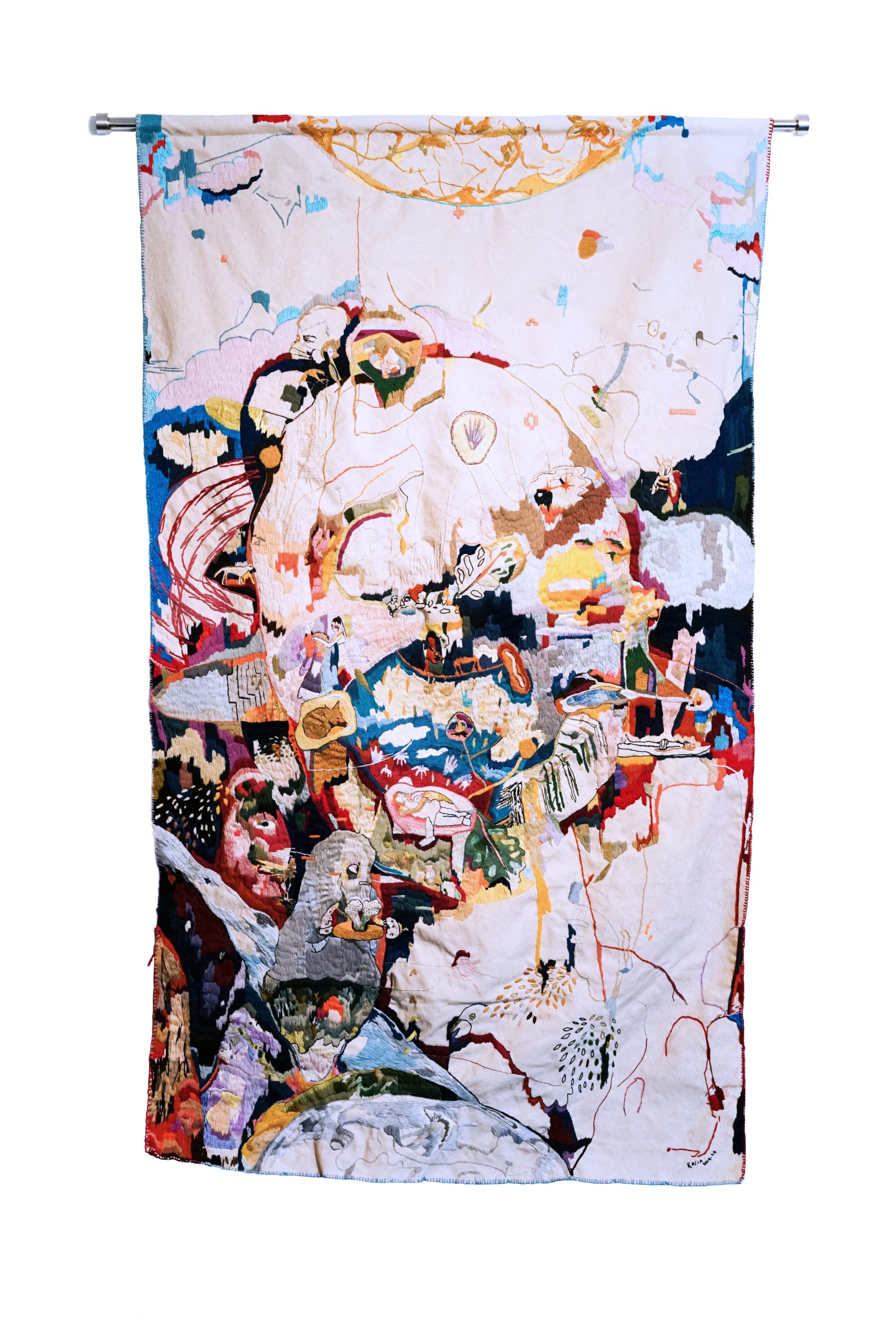
Image: Kasia Tons, After, 2019-20. Photograph Madisyn Zabel.
Kasia Tons
Kasia Tons is an Adelaide born and based textile artist working with hand embroidery, soft sculpture and wearables work sits somewhere between art, fashion and craft. Her process is slow and intuitive, with a colourful, loose aesthetic and recurring personal symbology through which she explores universal themes of mental health, technology use and our connection with the environment, one another, and ourselves.
Mask making has become an important way in which she explores these topics, due to their inherently psychological nature and expansive history of uses to connect the wearer with something beyond or within themselves that is hidden. She works between her off grid home camp in the Adelaide Hills and an inner-city studio with a tangle of threads, fabric scraps, found materials and beads.
She has participated in residencies in Iceland, the USA, Latvia, and the Slovak Republic. The Mark Rothko Art Centre, Latvia holds two of her pieces as part of their permanent collection and her work was selected as a finalist for the 2021 Ramsay Art Award.
https://kasiarosetons.com/
Adelaide Symphony Orchestra with Adelaide Festival Centre:
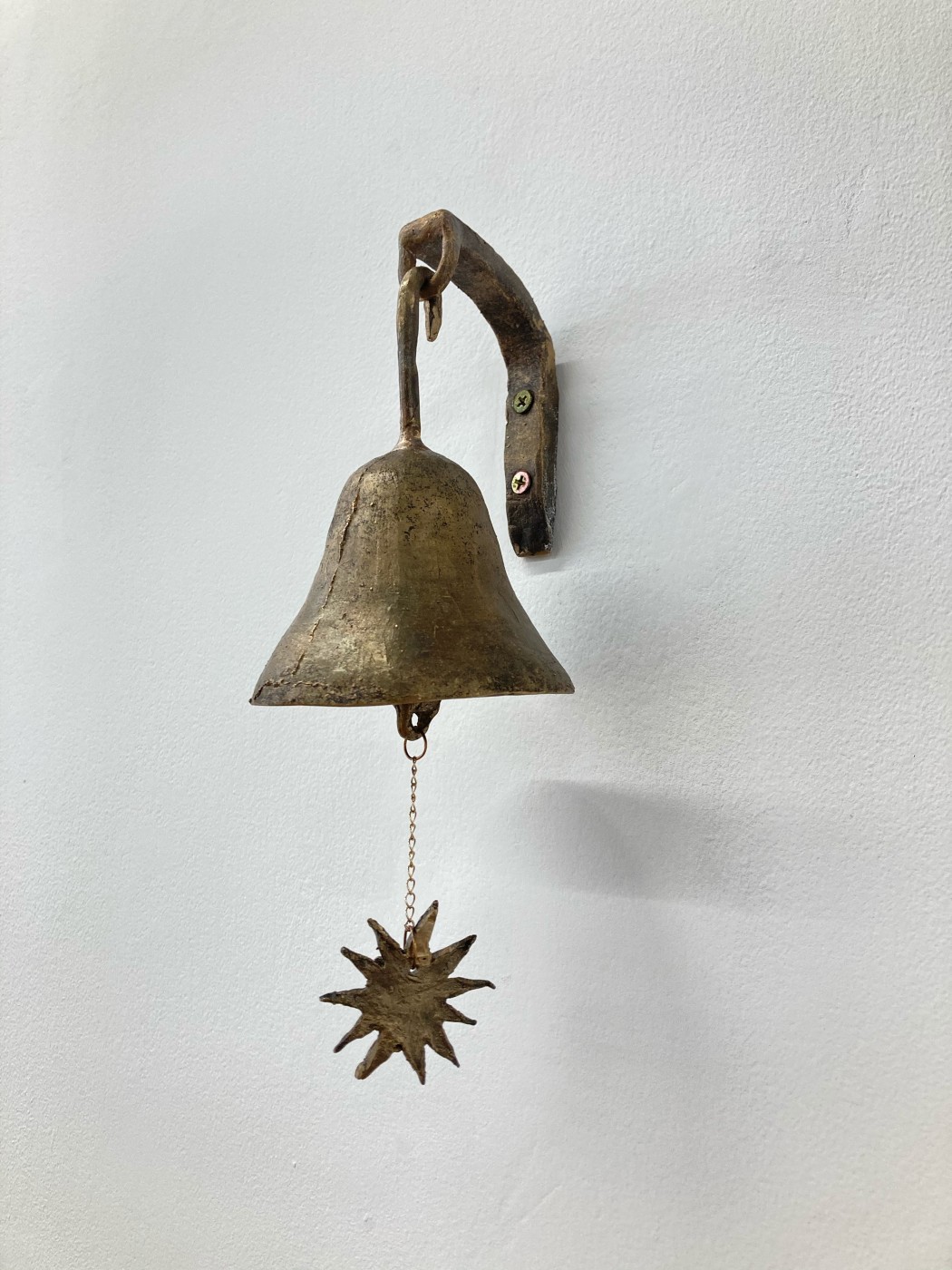
Image: Chelsea Farquhar, bronze bell, 2020. Photograph courtesy the artist.
Chelsea Farquhar
Chelsea Farquhar is a South Australian based emerging artist who utilises sculptural and performative outcomes to highlight moments of exchange and collaboration.
Farquhar graduated with first class honours from the Victorian College of the Arts in 2020 where she received the West Space Window Exhibition award to exhibit in 2021. In 2017 Farquhar graduated with a Bachelor of Fine Arts from Adelaide Central School of Art and in 2018 received a Carclew Fellowship. In 2022 Chelsea will be undertaking a residency at Watch This Space gallery in Alice Springs NT.
South Australian Museum:

Image: Peter Turner, acacia wood clapping sticks. Photograph courtesy the artist.
Peter Turner
Peter Turner is a Narungga, Kokatha, Ngadjuri man who has lived in Wallaroo since his childhood in the early 1970’s. His Ancestral connections extend into surrounding South Australian Aboriginal nations such as Yankanyjatjara and Kaurna. He continues to live on Narungga land today, with his wife and younger children.
Peter has had many forms of employment on Narungga land over many years. His earlier jobs included cleaning grain ships and fishing professionally from a young age. For many years Peter has been the only professional snake catcher on Yorke Peninsula.
Peter learnt from his Elders from a young age and was granted responsibility to be a custodian of Northern Narungga Country by his Aunties. He continues to research as much as he can about his culture. His cultural knowledge and the knowledge he holds in regards to Narungga lands has led him to work in various forms, over many years, protecting cultural heritage assets and the natural environment on Yorke Peninsula. Peter regularly undertakes work with the Department of the Premier and Cabinet’s Aboriginal Affairs and Reconciliation Division still to this day. Peter is a cultural leader within the Narungga community and regularly shares his knowledge with school children, through working with schools and the Science Curriculum Team within the Department for Education of South Australia.
Amongst many other things, Peter has also been an artist (painter) and maker of traditional Narungga tools, for many years. He comes from a family of many well-established artists. He uses his traditional knowledge of plants and other resources to revive ancient Narungga practices, such as string and net making.

Image: Clem Newchurch, abalone shell fire carrier. Photograph Rosina Possingham.
Clem Newchurch
Clem is a Kaurna Narungga Kokatha man who has resided in the southern Adelaide region for the majority of his life. He has extended Ancestral connections to surrounding South Australian Aboriginal Nations such as Yankanyjatjara and Ngarrindjeri.
Clem worked for many years in the Youth and Community Services industries, working in roles such as Aboriginal Community Education Officer roles within schools and as a Community Development Officer working in Local Government.
More recently Clem has worked in Arts and Education settings, exhibiting works and sharing his cultural knowledge through various settings such as programs, workshops and events. He has also worked in Film and Multimedia settings including Writing and Directing two NITV ‘Our Stories’ Documentaries that have been broadcast on NITV since 2018.
Clem began weaving after learning the Ngarrindjeri weaving style from Ngarrindjeri Elders at Camp Coorong many years ago. He continued weaving at home on Kaurna Country, sourcing materials from his local area and in doing so, found the appropriate native plants used to make string. Clem has since been developing his cultural artistic practice, learning from Elders, other community members and other sources (such as the South Australian Museum), sharing his knowledge along the way and supporting the revival of Ancient Kaurna cultural practices, including net making and carving.


